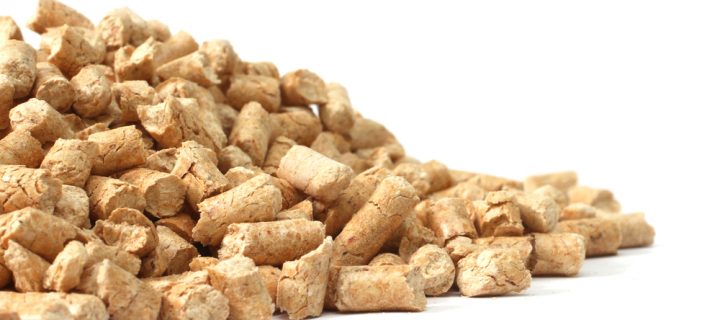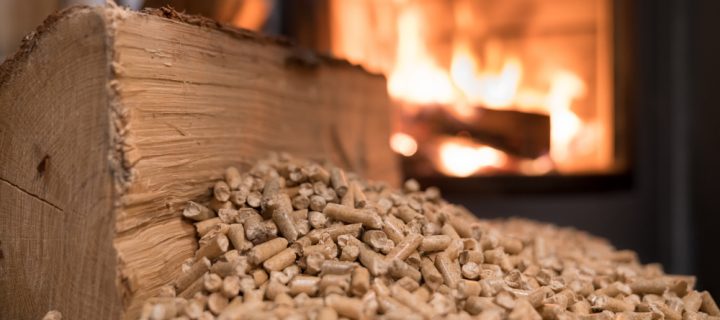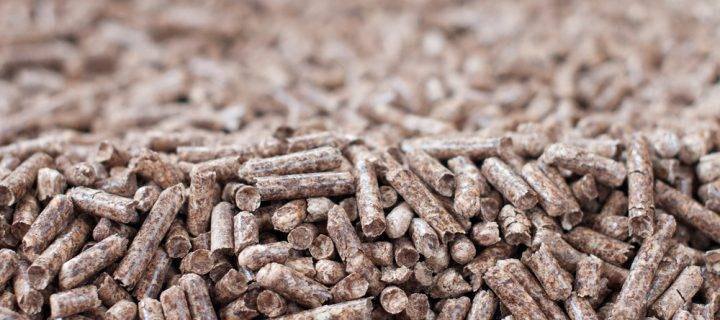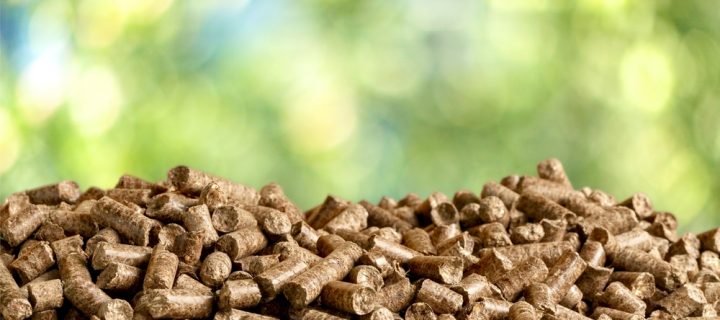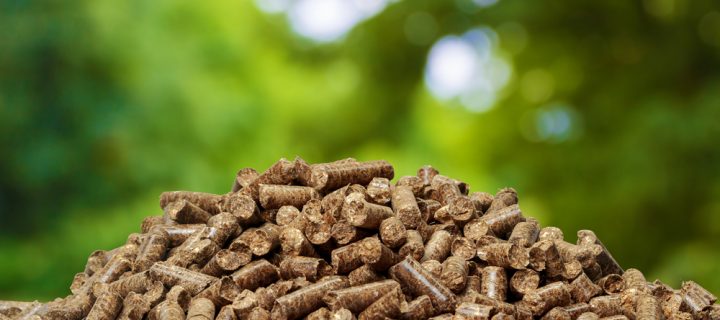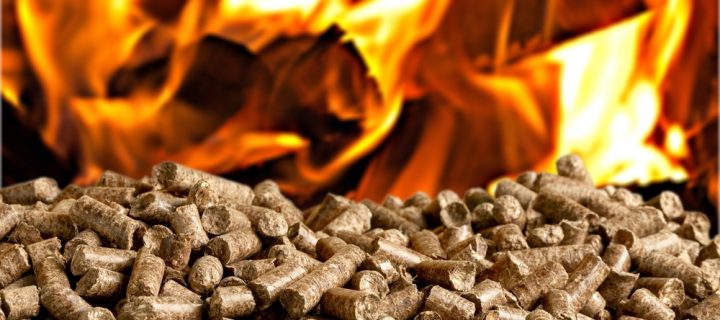Sustainability is more important than ever with the negative effect of climate change on the planet; with wood pellet stoves being the most environmentally friendly heating option. P.H Winterton and Son are the leading suppliers of biomass fuel, with our wood pellets sourced from our sawmill waste collection service. Traditional wood-burning stoves have a number of benefits, using a renewable fuel source that will reduce your heating bills. The most effective pellet stoves can be up to 90% more efficient than standard wood burners because they burn pellets that contain a mixture of sawdust, bark and other biodegradable materials. The level of airborne particulates that the pellets produce is also relatively low. Just like a gas boiler, you can switch pellet burners on and off on-demand giving you an instant source of heat. The burner can be set to your specific requirements, which means you get the most out of the appliance. How Do Wood Pellet Stoves Work? Pellet stoves burn compressed wood or biomass pellets creating a source of heat by slowly feeding fuel automatically from the storage container into the burn tray. A constant flame is then created and monitored to ensure you are getting maximum efficiency. The built-in hopper allows pellet burners to operate autonomously for about 12 hours under full load. One of the main benefits of pellet stoves is how easy they are to use. With automatic ignition, you can be assured your pellet burner will only start burning when needed, which saves you money in the long-term. They will produce very small amounts of ash and chimney creosote that reduces the number of times your chimney needs cleaning. Regarding fuelling your pellet stove, pellets are convenient and cost-effective when compared to other fuel sources. Reasons to Use Pellet Stoves Fuel will only need replenishing once a day, whereas appliances fuelled by wood, which needs regular top-ups every few hours. Pellets release much lower emissions when compared to fossil fuels Pellet stoves are highly efficient due to the even distribution of the heat by an extractor. Get in Touch for More Information If you have any questions about biomass fuel and wood pellet stoves, please do not hesitate to contact us...
Read Moreabout What are the Advantages of Wood Pellet Stoves?P.H Winterton is one of the countries leading suppliers of biomass fuel, which is fueled by wood pellets recycled from our sawmill waste collection service. For this blog, we are going to talk you through how wood pellet stoves work and why you should consider using one. How Do Wood Pellet Stoves Work? Wood pellet stoves do look similar to wood-burning stoves and fireplaces but they are a more environmentally friendly and low-cost heating option. In a time when climate change and environmental awareness is at the forefront of many home and business owners minds, they have become even more popular. The wood pellet that power the stoves look similar to rabbit food and are considered eco-friendly because they are cheap and easy to manufacture. They also have a very low pollution rate. The Mechanics of Wood Pellet Stoves Wood pellet stoves operate with electricity, with pellets loaded into the hopper which is either located on the top or bottom of the unit. The auger is a motorised device which delivers the pellets from the hopper into the burn pot with the auger’s speed determining the stove’s temperature. The burn pot is based in the combustion chamber and is then ignited creating a hotter flame because of how heavily compressed and dense and low in moisture the pellets are. The pot serves as a carburettor for the stove, mixing the air and fuel which creates combustion with the ashes from the burnt pellets captured in an ash pot which needs cleaning periodically. Unlike a regular fireplace, pellet stoves heat a room through convection, which is the transmission of heat that occurs from a forced combination of cool and hot air currents. The convection blower pulls cool air in from the room, passing over the fire in the burn pot and makes the flame hotter enabling the pellets to burn evenly and efficiently. The heated air will move across a heat exchanger, designed to transfer clean air into your home through the room blower. This heat exchanger acts like a furnace when used in combustion because its located in the combustion chamber preventing the outside of the stove becoming too hot. The exhaust blower will push out gases from a...
Read Moreabout Wood Pellet Stoves Explained by PH WintertonBiomass energy is the use of organic material to generate energy. Biomass fuel is simply organic matter, such as wood pellets, grass clippings plus dung. P.H Winterton and Son is the leading biomass energy supplier, using wood residue from our sawmill waste collection service which can be burnt in a boiler and used for electricity and industrial heating. Here we will answer some of those burning questions you may have about this energy source. When Was Biomass Fuel First Used? While you could say it was discovered back when man lived in caves and realised that wood could burn, it was much later when it was truly utilised. Back in the 13th-century explorer Marco Polo noted the processes that could create biofuels after seeing the Chinese using covered sewage tanks to create biogas. In the late 1800s, Rudolf Diesel invented a biofuel engine powered by vegetable oil and this was before petroleum-based diesel fuel became widely available. How Does Biomass Generate Electricity? Biomass fuel generates electricity in a number of ways, with the most common being combustion. This means burning agricultural waste or woody materials to heat water and produce steam that spins turbines. In some biomass plants, excess steam can also be used in on-site manufacturing processes or heating, which increases the energy efficiency of biomass electricity generation to around 80%. How Much Energy Does Biomass Energy Contain? Energy is measured in joules, with wood, which is commonly used for biomass, containing around 15 megajoules per kg. If it is dried before it is burned, it is boosted to around 18 megajoules per kg. Get in Touch For More Information If you would like to know more about biomass wood pellets from P.H Winterton and Son, please contact us today. We currently offer P16 and P35 wood pellets, which can be used in biomass boilers. Read some of our Testimonials to get a better idea of the quality of our products and...
Read Moreabout Explaining the History of Biomass FuelA new strategy set for 2022 has been announced by the UK Government that looks set to support the use of biomass fuel. The UK Renewable Energy Association has welcomed this announcement, reiterating how important bioenergy is to a renewables revolution. P.H Winterton and Son are one of the leading providers of biomass fuel to clients all over the country. Here we will look at the announcement in greater detail and how biomass fuel could become more widely used. How Bioenergy Could Affect Climate Change The UK Department for Business, Energy and Industrial Strategy (BEIS) is putting together a new bioenergy strategy in response to the Committee on Climate Change’s 2020 progress report, which was released in June. The report detailed progress for the UK in reducing emissions and looked at the government’s climate change mitigation activity. This report called for the UK to refresh its bioenergy strategy to include the best uses of biomass fuel and waste resources through until 2050. This includes wood in construction and the wider bio-economy, the role of carbon capture and storage (CCS) plus clear dates for CCS to be implemented in biomass and waste facilities. The BEIS intends to publish a new biomass energy strategy in 2022, which will build on the previous strategy released in 2012. It will aim to bring together many departments whose policies for net-zero involving the use of sustainable biomass. Nina Skorupska, chief executive of the Renewable Energy Association (REA) commented, “We note the Government’s response to the CCC’s report and strongly welcome the government’s new commitment to delivering a revised Bioenergy Strategy for the U.K., in line with the recommendation of the Committee on Climate Change and building on the REA’s own industry-led Bioenergy Strategy, published last year.” Leading Supplier of Biomass Fuel P.H Winterton currently offers two different types of biomass fuel, P16 grade (smaller size of wood chip) plus P35 grade (a grade wood with no contaminants present). We use Grade-A wood residue from sawmill waste collections which can be burnt in a boiler for industrial heating and electricity. Get in touch today to find out...
Read Moreabout How the New Government Bill Affects Biomass FuelBiomass is one of the most renewable energy sources which refers to biological material derived from living organisms such as wood and waste. P.H Winterton and Son have been producing biomass fuel using wood pellets that we have produced from collecting waste from sawmills, for a number of years. We are proud to be one of the UK Government’s approved Biomass Supplier List, reaffirming our commitment to producing the best products for our customers. 4 Advantages of Biomass Fuel Here are four main advantages of using biomass energy – 1. Renewable Energy Source – The main benefit of using biomass fuel is that it is a renewable source of energy. This means it cannot be depleted like fossil fuels. Biomass is mostly derived from plants, with plants needed to support life on planets. 2.Reduce Greenhouse Gas Emissions – Biomass helps to reduce greenhouse gas emissions which in turn has an impact on global warming and climate change. 3. Cleaner Environment – Biomass can also help clean our environment and with the world population only increasing, there is a problem with increased waste which needs to be correctly disposed of. A lot of garbage ends up in rivers, water streams, oceans which harms nearby ecosystems which has a negative impact on human health. 4. Biomass is Widely Available Energy Source – One of the main benefits of biomass energy is that it is a widely available source of energy. We all know fossil fuels are not going to last forever, whereas using biomass is more economic and environmental energy source. Get in Touch for More Information If you have never considered using biomass fuel before, contact P.H Winterton and Son with any questions you may have. As a family-run business, we understand the importance of great customer service plus supplying the best products. This is why we have been producing animal bedding and biomass fuel across six...
Read Moreabout Why Should I Use Biomass Energy?Biomass boilers are designed to burn solid fuels classed as biomass to create heat using materials such as wood chip and wood pellets. P.H Winterton and Son have been supplying biomass fuel wood pellets for a number of years to customers all over the country, helping to fuel more renewable heat sources. For our latest blog, we are going to do a deep dive into biomass boilers, how they work and why you should consider investing in one. Do Biomass Fuel Boilers Produce Smoke or Other Emissions? A well-designed biomass boiler using biomass fuel that is specified by its manufacturer, should not produce any smoke. Black smoke can sometimes be produced if the fuel is too wet for the boiler. All biomass boilers produce oxides of nitrogen, especially nitrogen dioxide. Temperatures required to ensure the complete combustion of wood gases will create conditions where atmospheric oxygen and nitrogen can combine chemically. The majority of biomass boilers have a combustion control system that is capable of low NOx emissions, which means they produce less NOx than oil boilers. They also do not produce any oxides of sulphur. How Reliable are Biomass Boilers? The reliability of a biomass system is closely linked to the quality of fuel being burned. Wood pellet systems are more reliable and less prone to breakdown when compared to woodchip systems. How Do I Get Rid of Ash from my Biomass Boiler? Ash created from timber biomass boilers contains the minerals taken up by the trees during growth (such as potassium and phosphorus), which unless it’s been contaminated can form a valuable fertiliser. This ash can be spread in the garden and helps to reduce the acidity in the soil. If you are not much of a gardener, it can be easily disposed of in your household waste. Get in Touch for More Information We are proud to be one of the approved suppliers of biomass fuel in the UK government’s Biomass Supplier List. This means you are getting the best renewable heating product from a quality-assured company. If you have any questions about biomass boilers of fuel, please contact P.H Winterton and...
Read Moreabout Everything You Need to Know About Biomass Boilers
